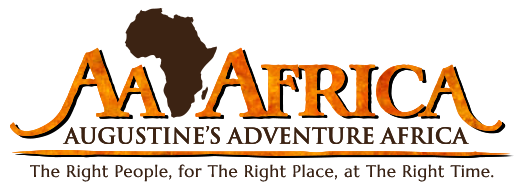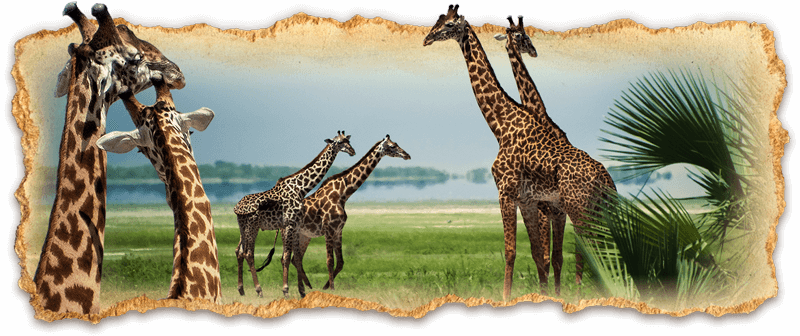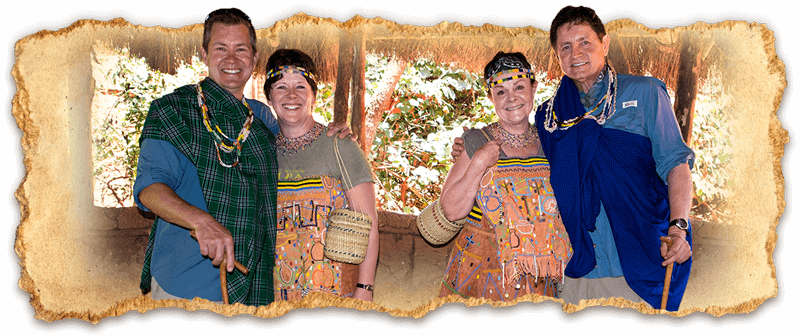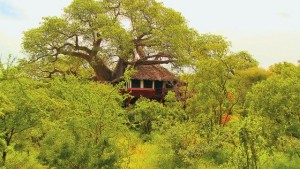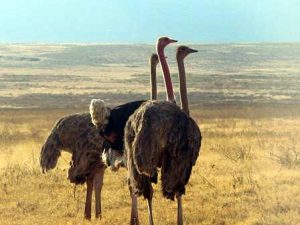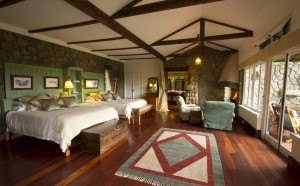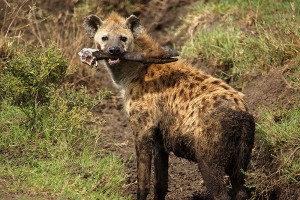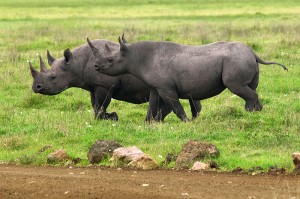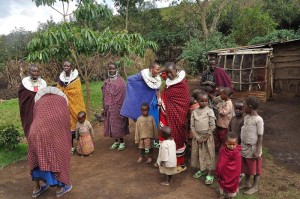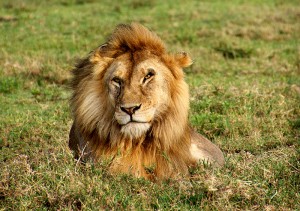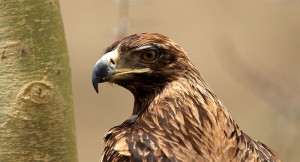Summer Escape
~ Ultra Luxury ~
~ Ultra Luxury ~
The best season for this departure is July—October
Safari Overview
With accommodations in top-notch ultra-luxury lodges and tented camps, our Ultra Luxury Summer Safari is the perfect opportunity to discover Northern Tanzania Parks and destinations, such as Tarangire National Park, Ngorongoro Highland, and the Serengeti Plains.
10 days
9 nights
- Safari Highlights:
- Indulge in top-notch, ultra luxury accommodations.
- Excellent concentration of Elephants in Northern Tanzania at Tarangire National Park.
- Enjoy a Bush Walk and Night Game Drive while staying at Tarangire Treetops.
- Participate on a Village Walk, School Visit and Farmers Market.
- Witness the abundance and diversity of carnivores on river beds and swamps.
- Enjoy 3-nights at the heart of Serengeti, which is home to the big cats such as Lions, Leopards and Cheetahs.
- Capture the beautiful landscape and scenery from a birds-eye view while flying over the Serengeti Plains and Ngorongoro Highland, on your return flight back to Arusha.
Itinerary
Ultra Luxury Summer Safari: Discover Northern Tanzania
Day 1
Arrive in Arusha, Tanzania
Arrive at Kilimanjaro International Airport (JRO) by your international flight. Your driver guide will meet you at you at the airport and drive you to Arusha Coffee Lodge (or similar) for overnight.
About Arusha Coffee Lodge
Day 2
Explore All Day and Retire in the Tree Tops
Drive to Tarangire Treetops (or similar) for Lunch. Afternoon Nature Walk, followed by an early Dinner and Night Game Drive. Dinner and overnight at Tarangire Treetops (or similar).
About Tarangire Treetops
Day 3
A Game Drive Day
Full day Game Drive in Tarangire National Park with picnic Lunch. Dinner and overnight at Tarangire Treetops (or similar).
About Tarangire National Park
Day 4
Lake Manyara National Park
Drive to Lake Manyara National Park for Game Drive with picnic Lunch. Dinner and overnight at Gibbs Farm (or similar).
About Lake Manyara National Park
About Gibbs Farm National Park
Day 5
Discover Local Culture, Enjoy a Guided Tour
After breakfast, Village Walk and School Visit. At noon, return to your lodge for Lunch. Late afternoon, do a Guided Garden and Coffee Farm Tour. Dinner and overnight at Gibbs Farm (or similar).
About Local Culture
Day 6
The Iraqw Tribe and Ngorongoro Crater
After a late breakfast, do a Home Visit to learn more about the Iraqw Tribe. Then proceed to Ngorongoro Crater Lodge for Lunch, and a PM Crater Game Run. Dinner and overnight at Ngorongoro Crater Lodge (or similar).
About the Iraqw Tribe
About Ngorongoro Crater
About Ngorongoro Crater Lodge
Day 7
Game Drives in the Crater
At 6:00 AM, return to Ngorongoro Crater for an early morning Game Drive with picnic Breakfast. Late afternoon, return to your lodge for a late Lunch, PM Crater Game Run, and PM at Leisure. Dinner and overnight at Ngorongoro Crater Lodge (or similar).
Day 8
Olduvai Gorge Museum and Maasai Village
Drive to Serengeti National Park, en route, visit Olduvai Gorge Museum and Maasai Village. Afternoon, enjoy picnic Lunch then continue to your lodge, doing Game Drive on the way. Overnight at Four Seasons Safari Lodge (or similar).
About Olduvai Gorge Museum
About Maasai Village
About Four Seasons Safari Lodge
Day 9
Game Drives in the Serengeti Plains
Morning and Afternoon Game Drive in Serengeti National Park. Overnight at Four Seasons Safari Lodge (or similar).
About Serengeti National Park
Day 10
Return Flight to Arusha
After Breakfast, enjoy a birds-eye view flight over the Serengeti Plains and Ngorongoro Highland, en route back to Arusha. Lunch and day room will be at Arusha Coffee Lodge. In the evening, transfer to Kilimanjaro International Airport (JRO) for your international flight back home.
- Inclusions:
- Respective accommodation or similar throughout as indicated.
- All meals on main tour as shown.
- All game drives with photographic roof hatch land cruiser driven by a professional driver guide.
- All transfers as per the itinerary.
- Complimentary bottled, water, soft drinks, beer and house wine during game drives.
- All national park entry fees and Olduvai Gorge Museum entry fee.
- Visit to Maasai Village.
- Naturalist guide.
- Exclusions:
- Entry VISA and local airport tax.
- Personal and baggage insurance.
- Excess baggage charges levied by airline.
- Meals and beverages other than specified.
- Tips to your naturalist guide and driver guide.
- Tips to porters and waiters.
- Cost for anything not mentioned on the list above.
Accommodations
Our Summer Safari Features Top-Notch, Ultra-Luxury Accommodations
Arusha Coffee Lodge - Arusha
Lying on the gentling rolling foothills that cascade down from the ever-present Mount Meru is the bustling and vibrant town of Arusha. It is here on the outskirts of this town, hidden amongst one of Tanzania’s largest coffee plantations, that you will find Arusha Coffee Lodge, a perfect haven for relaxation either before or after any African safari. Comprising of 30 Plantation Houses – inclusive of 12 Plantation Suites – that radiate out into the evergreen coffee fields, Arusha Coffee Lodge has been designed around the original landowner’s home that dates back to the early 1900’s. [learn more]
Tarangire Treetops - Tarangire National Park
Each of Treetops' elevated rooms boast one of the largest bedrooms to be found in any camp or lodge in East Africa – with a floor space of 65 square meters – and all with an exotic double shower en-suite bathroom. With furnishings that create warmth and demonstrate a commitment to local craftsmanship, the ‘up-in-the-air’ experience is completed by the open-fronted room design affording views across the Tarangire plains from an expansive but private balcony. [learn more]
Gibbs Farm - Karatu (and Near Ngorongoro Area)
Experience gracious hospitality, deeply rooted in East African culture and community. 17 guest cottages—each featuring a unique theme and richly appointed with eucalyptus floors, hand-crafted furniture, two queen-size beds, indoor and outdoor showers, a fireplace and private verandah—provide an elegant home away from home, with all of the cozy comforts. A cottage with a common living area and two bedrooms with en-suite bathrooms is available for families or couples traveling together. [learn more]
Ngorongoro Crater Lodge - Ngorongoro
Perched on the edge of the Crater itself, this award-winning lodge is fit for a king and queen. Steeped in romance, each stilted, handcrafted banana thatch suite is adorned with graceful antiques and unforgettable opulence. Divided into three camps, 30 stilted suites with banana leaf ceilings and grass roofs provide an intimate and exclusive Crater experience. Each camp has its own sitting and dining areas, with private butlers who provide warm, personal service. [learn more]
Four Seasons Lodge - Central Serengeti
Deep within Africa’s finest game reserve, our Safari Lodge welcomes you to a sanctuary of Four Seasons comfort. Get up close and intimate with lions, leopards and elephants – yet always feel safe and pampered. Experience thrilling Serengeti game drives and rare opportunities to connect with the local people and culture. Then return to the Safari Lodge located in Serengeti National Park, where our 77 secluded guest rooms, elegant spa and infinity pool promise a luxurious respite during your African safari adventures. [learn more]
Lying on the gentling rolling foothills that cascade down from the ever-present Mount Meru is the bustling and vibrant town of Arusha. It is here on the outskirts of this town, hidden amongst one of Tanzania’s largest coffee plantations, that you will find Arusha Coffee Lodge, a perfect haven for relaxation either before or after any African safari. Comprising of 30 Plantation Houses – inclusive of 12 Plantation Suites – that radiate out into the evergreen coffee fields, Arusha Coffee Lodge has been designed around the original landowner’s home that dates back to the early 1900’s. [learn more]
Tarangire Treetops - Tarangire National Park
Each of Treetops' elevated rooms boast one of the largest bedrooms to be found in any camp or lodge in East Africa – with a floor space of 65 square meters – and all with an exotic double shower en-suite bathroom. With furnishings that create warmth and demonstrate a commitment to local craftsmanship, the ‘up-in-the-air’ experience is completed by the open-fronted room design affording views across the Tarangire plains from an expansive but private balcony. [learn more]
Gibbs Farm - Karatu (and Near Ngorongoro Area)
Experience gracious hospitality, deeply rooted in East African culture and community. 17 guest cottages—each featuring a unique theme and richly appointed with eucalyptus floors, hand-crafted furniture, two queen-size beds, indoor and outdoor showers, a fireplace and private verandah—provide an elegant home away from home, with all of the cozy comforts. A cottage with a common living area and two bedrooms with en-suite bathrooms is available for families or couples traveling together. [learn more]
Ngorongoro Crater Lodge - Ngorongoro
Perched on the edge of the Crater itself, this award-winning lodge is fit for a king and queen. Steeped in romance, each stilted, handcrafted banana thatch suite is adorned with graceful antiques and unforgettable opulence. Divided into three camps, 30 stilted suites with banana leaf ceilings and grass roofs provide an intimate and exclusive Crater experience. Each camp has its own sitting and dining areas, with private butlers who provide warm, personal service. [learn more]
Four Seasons Lodge - Central Serengeti
Deep within Africa’s finest game reserve, our Safari Lodge welcomes you to a sanctuary of Four Seasons comfort. Get up close and intimate with lions, leopards and elephants – yet always feel safe and pampered. Experience thrilling Serengeti game drives and rare opportunities to connect with the local people and culture. Then return to the Safari Lodge located in Serengeti National Park, where our 77 secluded guest rooms, elegant spa and infinity pool promise a luxurious respite during your African safari adventures. [learn more]
Destinations
Discover the World's Abundant Wildlife in Northern Tanzania
Tarangire National Park
Herds of up to 300 elephants scratch the dry river bed for underground streams, while migratory wildebeest, zebra, buffalo, impala, gazelle, hartebeest and eland crowd the shrinking lagoons. It’s the greatest concentration of wildlife outside the Serengeti ecosystem – a buffet for predators. The swamps, tinged green year round, are the focus for 550 bird varieties, the most breeding species in one habitat anywhere in the world.
The compact game –viewing circuit through Manyara offers a virtual microcosm of the Tanzanian safari experience. From the entrance gate, the road winds through an expanse of lush jungle like groundwater forest where hundred-strong baboon troops lounge nonchalantly along the roadside, Blue monkeys scamper nimbly between the ancient Mahogany trees, dainty Bushbuck tread warily through the shadows, and outsized forest hornbills honk in the high canopy.
Contrasting with the intimacy of the forest is the grassy floodplain and its expansive views eastward across the Alkakine Lake. Large buffalo, wildebeest and zebra herds congregate on these grassy plains, as do giraffes some so dark in coloration that they appear to be black from a distance.
Manyara provides the perfect introduction to Tanzania’s birdlife. More than 400 species have been recorded, and even a first-time visitor to Africa might reasonably expect to observe 100 of these in one day. Highlights include thousands of pink-hued flamingos on their perpetual migration, as well as other large waterbirds such as pelicans, cormorants and storks.
The village walk enables travelers to experience some local culture, people life and their respective activities. This may include visiting a School, Hospital, local Brick Making Centre, a Church, and more.
Coffee Plantation and Garden Walk
This guided garden walk gives our travelers an opportunity to learn many facts about how coffee is grown in Tanzania, as well as visiting an organic garden to observe how different vegetables are grown here.
Iraqw Tribe Originally the Iraqw Tribe immigrated from Ethiopia and are locally known for their farming and small-scale pastoralism. They are a community that dwells just outside Ngorongoro Conservation Area. [learn more]
Ngorongoro Crater
The Ngorongoro Crater is only 3% of the total area of Ngorongoro Conservation Area (NCA), but it is home to more than 75% of all the game animals found in NCA. Technically known as a caldera, Ngorongoro crater is the largest unflooded and unbroken caldera in the world with 19.2 km in diameter, 2000 feet deep, and 102 sq miles in area. The rich pasture and permanent water of the crater floor supports a large resident population of wildlife of up to 25,000 predominantly grazing animals. These include wildebeest, zebra, buffalo, kongoni, gazelle, warthog and eland. The swamps and forest provide additional resources for hippo, elephant, waterbuck, reedbuck, and bushbuck, baboons and Vervet monkeys. The steep inner slopes provide habitat for dik-dik and the rare Mountain reedbuck.
Jackals thrive in the crater and bat-eared foxes live in the short grass area. Predatory animals such as lion, leopard, cheetah and serval cats live off the abundant wildlife; and large packs of hyenas roam the crater, making their own kills and scavenging from others. The crater is a dynamic and constantly changing ecosystem and the numbers and proportion of some animals including lions and Black rhinos have fluctuated considerably over the past 30 years. Thanks to anti-poaching patrols in the crater and the whole ecosystem, the Black rhino population is coming back. Ngorongoro crater is one of the few places in East Africa where visitors can see a rhino. [learn more]
Laetoli and Olduvai Gorge Museum
Laetoli is found west of Ngorongoro Crater. It is here where hominid footprints are preserved in volcanic rock 3.6 million years old and represent some of the earliest signs of mankind in the world. Excavation, mainly by the archaeologists Louis and Mary Leakey, yielded four different kinds of hominid, showing a gradual increase in brain size and in the complexity of their stone tools. The first skull of Zinjanthropus, commonly known as the "Nutcracker Man”, who lived about 1.75 million years ago was found here. [learn more]
Maasai Village
The traditional Maasai Village is called a Manyata. This is where different Maasai families live with their livestock. The Livestock live in the middle of thick Acacia thorny fences that protect them from any possible predator attacks. The visit to these villages give guests an opportunity to learn the lifestyle of Maasai people including their culture and tradition. [learn more]
Serengeti National Park
Tanzania’s oldest and most popular national park, also a World Heritage Site and also proclaimed a Worldwide Wonder, the Serengeti is famed for its annual migration, when some two million hooves pound the open plains, as more than 200,000 zebra and 300,000 Thomson’s gazelle join the wildebeest’s trek for fresh grazing. Yet even when the migration is quiet, the Serengeti offers arguably the most scintillating game-viewing in Africa: great herds of buffalo, smaller groups of elephant and giraffes, and hundreds upon hundreds of eland, topi, kongoni, impala and Grant's gazelle.
The spectacle of predators versus prey dominates Tanzania's greatest park. Golden–mained lion prides feast on the abundance of plain grazers. Solitary leopards haunt the Acacia trees lining the Seronera River, while high densities of cheetahs prowling the southeastern plains. Almost uniquely, all three African jackal species occur here, alongside the Spotted hyena and a host of more elusive small predators, ranging from the insectivorous aardwolf to the beautiful serval cat.
But there is more to Serengeti than large mammals. 500–plus bird species, ranging from the outsized ostrich and bizarre secretary bird of the open grass-land, to the Black eagles that soar effortlessly above the Lobo Hills.
Herds of up to 300 elephants scratch the dry river bed for underground streams, while migratory wildebeest, zebra, buffalo, impala, gazelle, hartebeest and eland crowd the shrinking lagoons. It’s the greatest concentration of wildlife outside the Serengeti ecosystem – a buffet for predators. The swamps, tinged green year round, are the focus for 550 bird varieties, the most breeding species in one habitat anywhere in the world.
- Location: 118 km (75 miles) southewest of Arusha
- Getting there: Easy drive from Arusha or Lake Manyara following a surfaced road to within 7km (four miles) of the main entrance gate; can continue on to Ngorongoro Crater and the Serengeti
- What to do: Guided walking safaris; day trips to Maasai and Barabaig villages, as well as to the hundreds of ancient rock paintings in the vicinity of Kolo on the Dodoma Road
- Learn more
The compact game –viewing circuit through Manyara offers a virtual microcosm of the Tanzanian safari experience. From the entrance gate, the road winds through an expanse of lush jungle like groundwater forest where hundred-strong baboon troops lounge nonchalantly along the roadside, Blue monkeys scamper nimbly between the ancient Mahogany trees, dainty Bushbuck tread warily through the shadows, and outsized forest hornbills honk in the high canopy.
Contrasting with the intimacy of the forest is the grassy floodplain and its expansive views eastward across the Alkakine Lake. Large buffalo, wildebeest and zebra herds congregate on these grassy plains, as do giraffes some so dark in coloration that they appear to be black from a distance.
Manyara provides the perfect introduction to Tanzania’s birdlife. More than 400 species have been recorded, and even a first-time visitor to Africa might reasonably expect to observe 100 of these in one day. Highlights include thousands of pink-hued flamingos on their perpetual migration, as well as other large waterbirds such as pelicans, cormorants and storks.
- Location: The entrance gate lies 1.5 hours (126km/80 miles) west of Arusha along a newly surfaced road, close to the ethnically diverse market town of Mto Wa Mbu.
- What to do: Game drives and night game drives, cultural tours, mountain bike outside the park, walking safari inside the park.
- Best time: Dry season (July-October) for large mammals; wet season (November-June) for bird watching, the waterfalls and canoeing.
- Learn more
The village walk enables travelers to experience some local culture, people life and their respective activities. This may include visiting a School, Hospital, local Brick Making Centre, a Church, and more.
Coffee Plantation and Garden Walk
This guided garden walk gives our travelers an opportunity to learn many facts about how coffee is grown in Tanzania, as well as visiting an organic garden to observe how different vegetables are grown here.
Iraqw Tribe Originally the Iraqw Tribe immigrated from Ethiopia and are locally known for their farming and small-scale pastoralism. They are a community that dwells just outside Ngorongoro Conservation Area. [learn more]
Ngorongoro Crater
The Ngorongoro Crater is only 3% of the total area of Ngorongoro Conservation Area (NCA), but it is home to more than 75% of all the game animals found in NCA. Technically known as a caldera, Ngorongoro crater is the largest unflooded and unbroken caldera in the world with 19.2 km in diameter, 2000 feet deep, and 102 sq miles in area. The rich pasture and permanent water of the crater floor supports a large resident population of wildlife of up to 25,000 predominantly grazing animals. These include wildebeest, zebra, buffalo, kongoni, gazelle, warthog and eland. The swamps and forest provide additional resources for hippo, elephant, waterbuck, reedbuck, and bushbuck, baboons and Vervet monkeys. The steep inner slopes provide habitat for dik-dik and the rare Mountain reedbuck.
Jackals thrive in the crater and bat-eared foxes live in the short grass area. Predatory animals such as lion, leopard, cheetah and serval cats live off the abundant wildlife; and large packs of hyenas roam the crater, making their own kills and scavenging from others. The crater is a dynamic and constantly changing ecosystem and the numbers and proportion of some animals including lions and Black rhinos have fluctuated considerably over the past 30 years. Thanks to anti-poaching patrols in the crater and the whole ecosystem, the Black rhino population is coming back. Ngorongoro crater is one of the few places in East Africa where visitors can see a rhino. [learn more]
Laetoli and Olduvai Gorge Museum
Laetoli is found west of Ngorongoro Crater. It is here where hominid footprints are preserved in volcanic rock 3.6 million years old and represent some of the earliest signs of mankind in the world. Excavation, mainly by the archaeologists Louis and Mary Leakey, yielded four different kinds of hominid, showing a gradual increase in brain size and in the complexity of their stone tools. The first skull of Zinjanthropus, commonly known as the "Nutcracker Man”, who lived about 1.75 million years ago was found here. [learn more]
Maasai Village
The traditional Maasai Village is called a Manyata. This is where different Maasai families live with their livestock. The Livestock live in the middle of thick Acacia thorny fences that protect them from any possible predator attacks. The visit to these villages give guests an opportunity to learn the lifestyle of Maasai people including their culture and tradition. [learn more]
Serengeti National Park
Tanzania’s oldest and most popular national park, also a World Heritage Site and also proclaimed a Worldwide Wonder, the Serengeti is famed for its annual migration, when some two million hooves pound the open plains, as more than 200,000 zebra and 300,000 Thomson’s gazelle join the wildebeest’s trek for fresh grazing. Yet even when the migration is quiet, the Serengeti offers arguably the most scintillating game-viewing in Africa: great herds of buffalo, smaller groups of elephant and giraffes, and hundreds upon hundreds of eland, topi, kongoni, impala and Grant's gazelle.
The spectacle of predators versus prey dominates Tanzania's greatest park. Golden–mained lion prides feast on the abundance of plain grazers. Solitary leopards haunt the Acacia trees lining the Seronera River, while high densities of cheetahs prowling the southeastern plains. Almost uniquely, all three African jackal species occur here, alongside the Spotted hyena and a host of more elusive small predators, ranging from the insectivorous aardwolf to the beautiful serval cat.
But there is more to Serengeti than large mammals. 500–plus bird species, ranging from the outsized ostrich and bizarre secretary bird of the open grass-land, to the Black eagles that soar effortlessly above the Lobo Hills.
- Location: 335km (208 miles) from Arusha, stretching north to Kenya and bordering Lake Victoria to the west
- What to do: Hot-air balloon safaris, game viewing. Visit neighbouring Lake Victoria, Olduvai Gorge
- Best seasons to visit:
- December–June to see the wildebeest migration
- June–October to see resident animals and predators (however, mid-March/April is the peak of the rain season)
- Learn more
Yes, I'm interested!
Have questions? Ready to book? Drop us a line and we'll get right back with you!
Use this form to book the Ultra Luxury Summer Escape.
You may customize a Signature Safari Itinerary to your liking, or simply design an itinerary from scratch!
